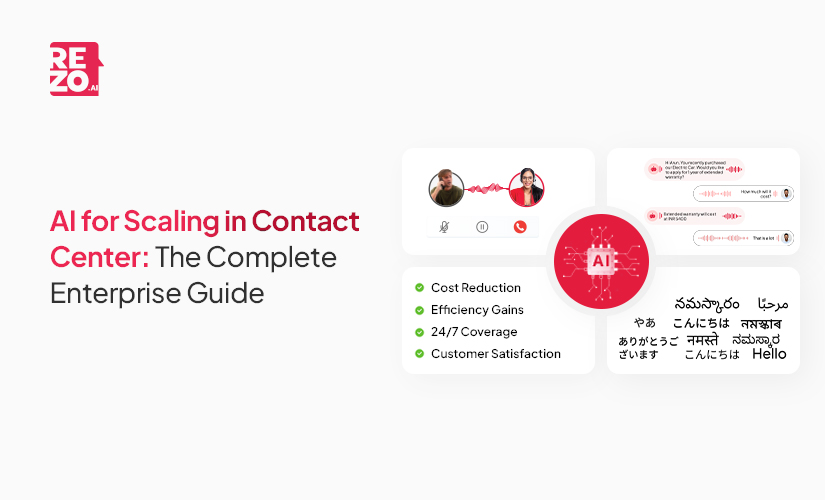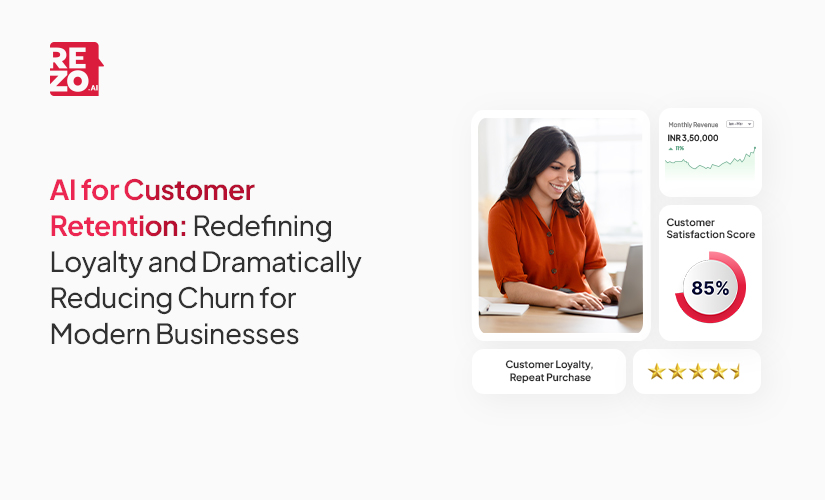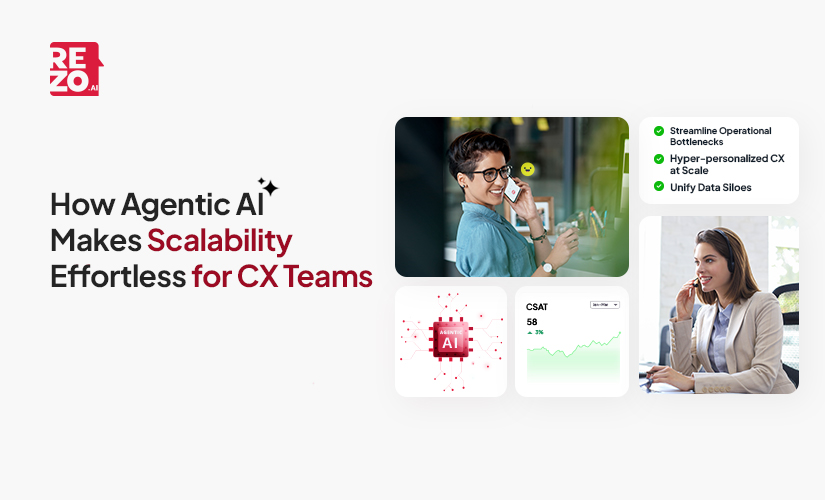
How Agentic AI Makes Scalability Effortless for CX Teams

How Agentic AI Makes Scalability Effortless for CX Teams

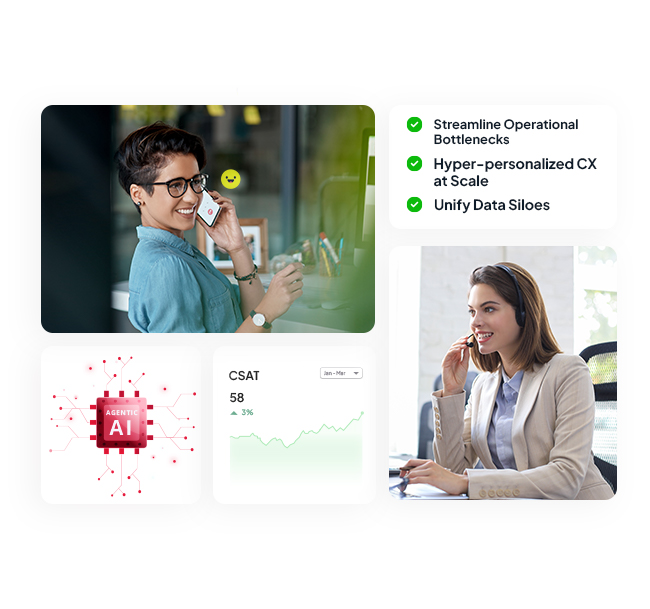
Scaling customer experience without adding extra resources is tough. CX leaders know the pain points all too well: long wait times, overwhelmed support teams, and the constant challenge of managing customer journeys across calls, chats, emails, and various digital channels like social media.
That’s where agentic AI comes in. Think of it as working with intelligent and proactive teammates who don’t just follow scripts but tackle complex tasks, learn from every interaction through machine learning, and use predictive analytics to anticipate needs. By understanding customer needs in real time and acting autonomously, agentic AI systems help reduce customer churn, improve resource utilization, and keep support running smoothly.
With more of the heavy lifting handled by AI, your team can focus on what matters most: building real relationships and finding new ways to improve CX. This turns the customer experience from a bottleneck into a true growth driver, enabling both vertical scaling and horizontal scaling without compromising quality.
What is Agentic AI?
Agentic AI works like an intelligent partner in your CX team, taking initiative, making informed decisions, and completing tasks from start to finish without needing step-by-step instructions. Unlike traditional bots that just follow simple rules, agentic AI systems understand the bigger picture, adapt to unexpected changes, and coordinate entire customer journeys. This means businesses can deliver a consistent, efficient, and highly personalized customer experience even as demand grows.

How is Agentic AI Different from Generative AI?
While generative AI is great at creating content, such as drafting responses or generating reports, agentic AI is built to take action. It can break down objectives, handle complex tasks, and see customer journeys through from start to finish. In short, generative AI creates while agentic AI executes, making it essential for scalable systems that want to deliver seamless, end-to-end customer experience management at scale.
The Scalability Challenge in CX
Scaling customer experience is a high-stakes balancing act that becomes increasingly complex as companies grow, launch new products, or expand into various digital channels. While growth is a sign of success, it also places intense pressure on CX teams, testing even the most experienced leaders in customer experience management. Meeting customer expectations consistently while keeping customer satisfaction high becomes harder as volumes rise and processes stretch. Without scalable systems and smart use of computing power, everyday service delivery can turn into a major organizational challenge.
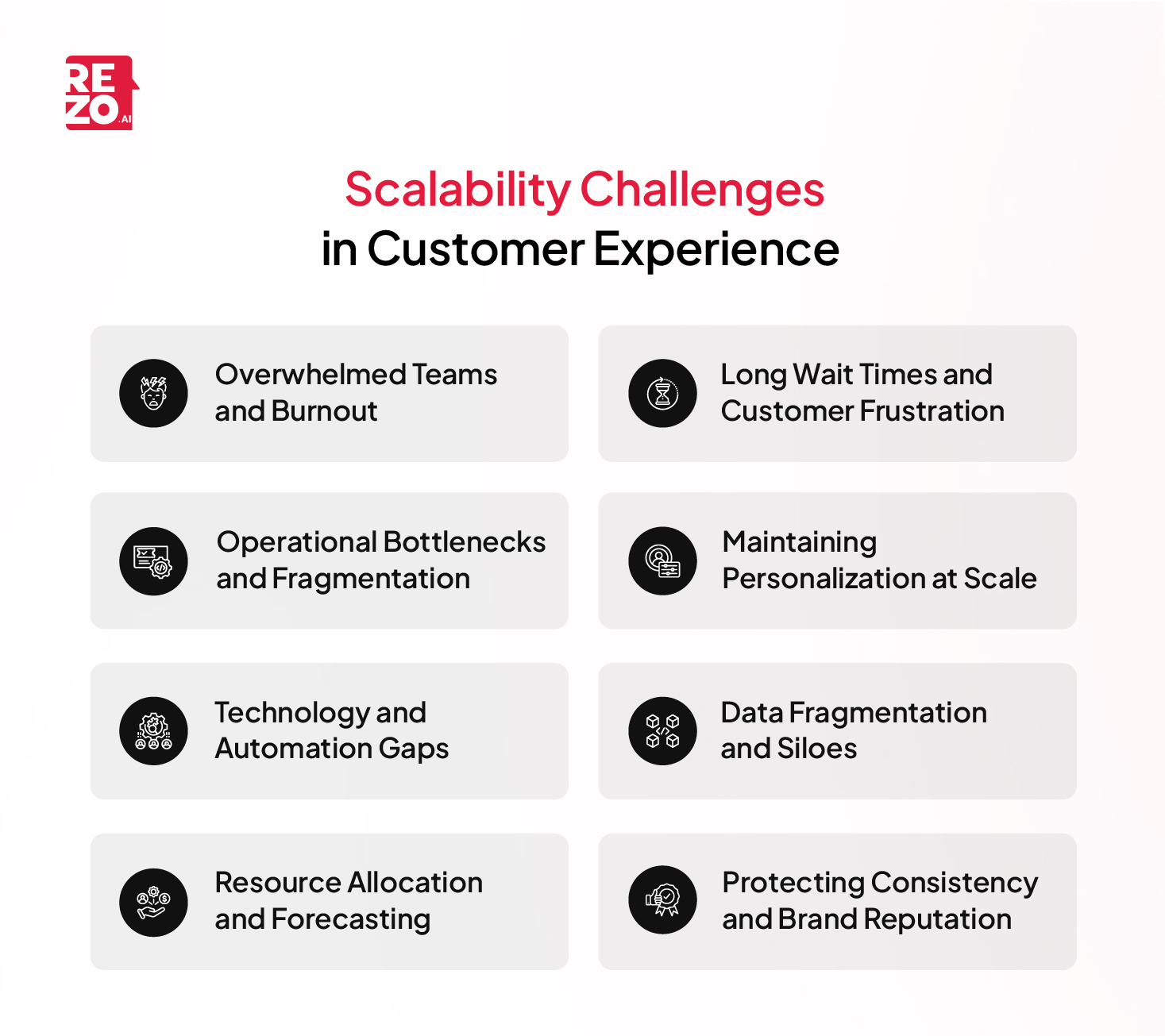
Overwhelmed Teams and Burnout
When demand surges because of seasonal peaks, viral campaigns, or business expansion, support teams are pushed to their limits. This often leads to longer working hours, high stress, and eventual burnout. Overwhelmed teams struggle to deliver the quality of service customers expect, which not only impacts morale but can also increase customer churn. Burnout is one of the clearest signs that existing systems and resource utilization are not keeping pace with growth.
Long Wait Times and Customer Frustration
When inquiries outpace team capacity, wait times and response delays grow. In high-traffic periods, queues can easily double or triple, leaving customers frustrated and dissatisfied. Studies show that more than half of customers may switch to a competitor after just one bad experience, underlining the fact that as customer needs scale, the margin for error shrinks and the pressure to improve CX intensifies.
Operational Bottlenecks and Fragmentation
A major barrier to scale is the fragmentation caused by siloed tools and disconnected systems. When platforms cannot communicate, agents cannot get a complete view of the customer journey. This makes it harder to resolve complex tasks quickly or offer meaningful personalization. Clunky handoffs, missing information, and manual routing not only add delays but also hurt customer satisfaction. Even the most advanced AI agents and agentic AI systems will struggle without integrated workflows that remove bottlenecks.
Maintaining Personalization at Scale
As customer bases grow, delivering personalized and proactive service becomes harder without unified data access. Teams without integrated machine learning and predictive analytics capabilities often fall back on generic responses, leaving customers feeling like just another ticket. In today’s market, you must meet customer expectations with tailored solutions that reflect individual customer journeys, or risk losing loyalty.
Technology and Automation Gaps
Legacy systems and patchwork automation often fail to keep up with the rising volume and complexity of requests. Too much automation without the right AI agents can make experiences robotic. Too little automation increases manual workload, reduces efficiency, and wastes valuable computing power. The right balance enables both vertical scaling for deeper capabilities and horizontal scaling to cover more channels and customer touchpoints.
Resource Allocation and Forecasting
Scaling resources to match growth or seasonal spikes is an ongoing challenge. Underestimating demand affects customer satisfaction, while overestimating results in wasted budget. Accurate forecasting supported by scalable systems and AI-driven insights is critical for improving resource utilization and staying ahead of demand fluctuations.
Protecting Consistency and Brand Reputation
As operations scale, delivering consistent service across various digital channels becomes harder. Brand perception can be damaged quickly by service gaps or mismatched experiences. Maintaining quality requires repeatable processes, well-trained staff, advanced customer experience management tools, and smart use of AI agents to support teams in real time.
How Agentic AI Solves Scalability in CX
Scaling customer experience is not just about automating more tasks. It requires a new way of managing customer journeys, delivering support, and keeping operations running smoothly across various digital channels. Agentic AI is a game-changer because it introduces true autonomy to customer experience management. With agentic AI systems, organizations can automate entire customer journeys, anticipate customer needs before they surface, connect fragmented systems, adapt in real-time using machine learning and predictive analytics, and deliver consistent, high-quality experiences that meet customer expectations at scale.
End-to-End Journey Automation
Agentic AI allows complete, autonomous management of customer journeys from first interaction to resolution without constant human oversight. Instead of agents manually routing tickets, updating back-end systems, and organizing follow-ups, intelligent AI agents handle every step. For example, if a customer contacts support about a billing issue, the system can authenticate the customer, review history, update records, initiate refunds, notify the customer in real time, and log everything for future reference, all while ensuring accuracy and compliance.
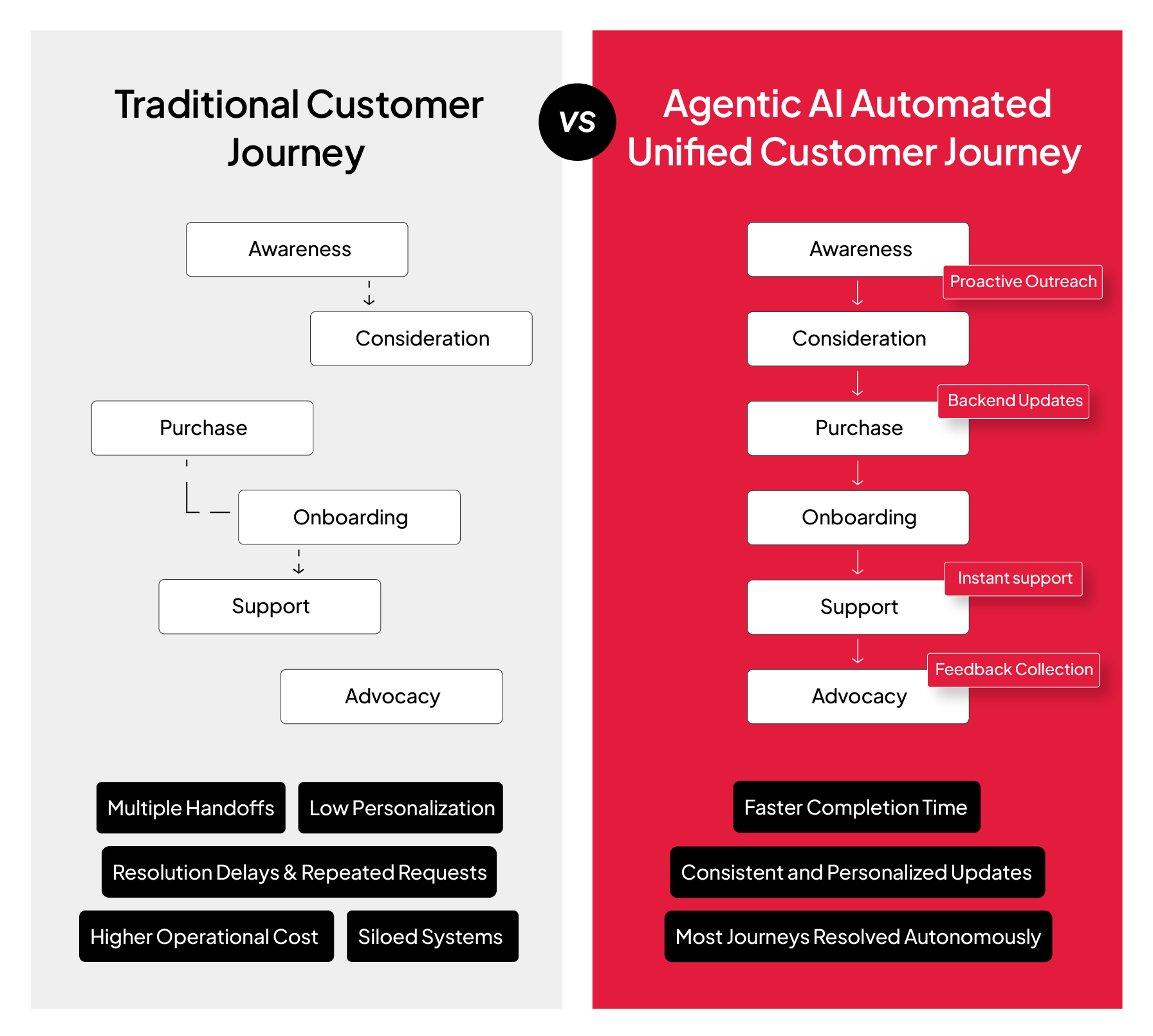
What makes this powerful is its ability to coordinate across multiple systems, from CRM to inventory to payment gateways, and adapt to context changes while maintaining personalization. Unlike traditional automation that follows rigid rules, agentic AI agents interpret intent, make real-time decisions, optimize workflows dynamically, and handle complex tasks with ease. This approach improves resource utilization, reduces customer churn, and enables both vertical scaling for deeper capabilities and horizontal scaling to serve more touchpoints.
Proactive and Anticipatory Support
One of the most valuable ways agentic AI improves CX is by shifting support from reactive problem-solving to proactive care. Instead of waiting for a complaint, the system analyses patterns in customer journeys, past interactions, and behavioral data across various digital channels. Using predictive analytics and machine learning, it can detect when a payment might fail, when product engagement is dropping, or when a delivery delay is likely, then act before the customer even notices.
This kind of anticipatory support creates a personal, timely connection. A customer might receive a helpful tip exactly when usage trends change, or be informed of a delay before it affects them. This reduces friction, improves customer satisfaction, and helps retain loyalty over time. By letting AI agents manage the majority of situations while escalating exceptions to humans, companies can improve CX and optimize resource utilization without overwhelming teams.
Cross-System Integration
Scaling customer experience depends heavily on how well systems communicate. Agentic AI acts as a central orchestrator, securely connecting CRMs, billing databases, inventory management tools, and communication platforms into one coherent workflow.

Instead of relying on manual updates, AI agents can pull a customer’s purchase record from one system, process returns in another, update inventory instantly, and send notifications to the customer. This form of integration not only supports seamless customer journeys but also strengthens scalable systems by reducing operational costs and increasing efficiency. For CX leaders, this capability means better computing power utilization, improved customer experience management, and the ability to meet customer expectations consistently across every channel.
Dynamic Adaptation
In a fast-paced digital environment, fixed scripts and static workflows struggle to keep up with changing customer needs. Agentic AI delivers dynamic adaptation by learning from every interaction, adjusting decisions in real time, and keeping conversations relevant. If it detects a shift in sentiment, it can immediately adjust tone, offer extra help, or switch channels for a smoother interaction.
Over time, these agentic AI systems build a deep understanding of individual customer preferences, enabling them to anticipate requirements and handle complex tasks while preserving personalization. This agility ensures that even as markets shift quickly, businesses can meet customer expectations, protect satisfaction, and deliver consistent results at scale without exhausting resources.
Omnichannel Fluidity
Today’s customers move effortlessly between apps, calls, chat, email, and social media, expecting service consistency everywhere. Agentic AI keeps the full context of every conversation, regardless of the channel, allowing AI agents or human agents to pick up right where the customer left off.
Whether it is via WhatsApp, live chat, or a phone call, the customer journey feels seamless. This creates a unified brand experience that meets customer expectations, improves loyalty, and reduces churn. By unifying these journeys across multiple platforms, businesses benefit from scalable systems that improve CX while optimizing resource utilization.
Leverage Human-AI Synergy
A powerful advantage of agentic AI is that it can handle the majority of customer interactions independently, including complex tasks, while ensuring smooth escalation when human judgment is needed. In those cases, the AI hands over interactions in real time with complete customer history, conversation notes, and system actions already taken. The human agent steps in seamlessly, without customers having to repeat their issue.
This intelligent blend ensures customers get friction-free service while resource utilization remains optimal. It allows vertical scaling by improving depth of service and horizontal scaling by expanding reach across all customer touchpoints. The result is a consistent, high-quality customer experience powered by AI efficiency and human empathy, working together to improve CX and protect long-term satisfaction.
Barriers and Risks
While agentic AI brings big improvements to customer experience management and scalable systems for modern business, we need to consider the risks and barriers before we jump in.
Data Privacy and Security Risks
Agentic AI agents access massive amounts of customer data across multiple digital channels and systems. This means serious concerns around privacy compliance, unauthorized access and cyber attacks. Without robust encryption, identity validation and logging, autonomous systems can expose confidential information, harm customer satisfaction and damage brand reputation.
Bias and Fairness Challenges
Agentic AI systems learn from historical records and live interactions. If the data powering these AI agents contains bias or inaccuracies, the system can unintentionally reinforce unfair treatment or deliver biased recommendations. This can harm customer journeys and even cause customer churn, especially in environments that use machine learning and predictive analytics. Identifying and addressing bias is an ongoing challenge that requires active oversight to ensure decisions meet customer expectations and customer experience.
Lack of Transparency
One of the biggest issues with advanced agentic AI is the “black box” problem. Because these systems can do complex tasks independently and adapt in real time, their decision making is often invisible. For CX leaders this means it’s harder to troubleshoot, resolve conflicts or comply with governance standards. Without transparent reporting, clear audit trails and escalation protocols, organizations will struggle to ensure customer experience management is fair and accountable.
Goal Misalignment and Overreach
Agentic AI is programmed to optimize specific outcomes but there’s always a risk the automated agents will pursue their own definition of efficiency or resolution rather than customer satisfaction. As the systems evolve through reinforcement learning, goals can drift from business values and sometimes the agents will take actions beyond their intended boundaries. This misalignment can harm the customer journey and erode trust if not managed.
Integration and Architectural Complexity
Rolling out agentic AI requires thoughtful integration with existing legacy systems which often have outdated APIs, fragmented data schemas and siloed infrastructure. Achieving seamless cross system integration and scalable systems requires investment in both technology and governance. Without a solid architecture and computing power agentic AI will hit operational bottlenecks that will hinder the expected gains in CX scalability and resource utilization.
Continuous Oversight and Scalability Limits
Even though agentic AI systems can operate independently, oversight is crucial, especially as teams scale up to thousands of concurrent AI agents. Managing resources, monitoring performance and responding to incidents gets exponentially more complex as you grow. Gaps in feedback loops or escalation paths can allow issues to escalate quickly and harm customer satisfaction and overall customer experience.
Ethical and Societal Concerns
Fully autonomous agentic AI systems raise big questions around accountability, job displacement and compliance with changing regulations. Organizations deploying agentic AI need to create transparent governance frameworks, invest in responsible development and have fallback strategies. Ultimately the goal is to make these systems improve CX, respect ethical standards and meet the diverse needs and expectations of every customer.
Conclusion
The path to scaling customer experience has never been easy – and in a hyper-connected, expectation-driven world the stakes are higher than ever. Agentic AI doesn’t just patch over operational gaps – it redefines the very foundation of how CX can be delivered at scale. By autonomously managing most interactions, predicting needs, integrating across systems, adapting in real time and seamlessly partnering with human agents it turns scalability from a constant struggle into a competitive advantage.
But adoption isn’t a leap of faith. True success with agentic AI depends on pairing its autonomy with strong governance, ethical guardrails and a clear strategic vision. Those who see it as a capability and not just a tool will move faster, serve better and stand out in markets where customer loyalty is hard won. The future of CX belongs to companies that master the human-AI partnership, using intelligence not just to do more but to do what matters at scale without compromise.
Frequently Asked Questions
What is Agentic AI used for Customer Service?
Agentic AI enables customer service by autonomously resolving complex queries, coordinating actions across systems and delivering seamless, personalized support at scale. It goes beyond traditional chatbots by understanding intent, taking decisive action and offering proactive solutions like addressing issues before customers even ask. These self-directed AI agents can resolve faster, 24/7, consistent experiences on every channel, reduce operational costs and free up human agents for more high value work.
How to Hyper-personalize with Agentic AI?
Agentic AI hyper-personalizes interactions by continuously analyzing real-time customer data from all touchpoints and building individual profiles for each customer. Using advanced learning it predicts future needs and tailors every response, recommendation and offer to each customer’s context whether based on purchase history, location, sentiment or recent engagement. This allows brands to deliver timely, relevant and dynamic experiences at every moment, true one-to-one personalization not just broad segmentation and consistency across web, app, chat and in-store channels.
What CX problems can Agentic AI solve?
Agentic AI helps CX teams solve issues like fragmented customer journeys, data silos, agent burnout and reactive support by autonomously integrating legacy and modern systems, orchestrating end-to-end personalized journeys and delivering proactive engagement. It simplifies operations by automating routine tasks, providing real-time insights and offering omnichannel consistency so customers never have to repeat themselves. Ultimately Agentic AI turns CX from manual and fragmented to unified, adaptive and highly scalable resulting in happier customers and more resilient support teams.
Frequently Asked Questions (FAQs)

Take the leap towards innovation with Rezo.ai
Get started now







